|
North African
Drumheads
in the early 20th century 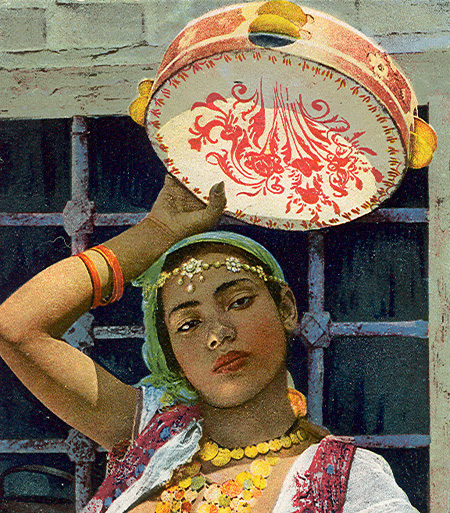 55 a Scenes et Types - Femme Mauresque Levy and Nerudein , Paris, 1940's Author's collection Through the 20th century, women across North Africa and the Middle East owned and played frame drums, doumbeks, and riqs (tambourines) for their own pleasure and at festivals, parties and weddings. Both amateur and professional female musicians were skilled percussionists. They often patterned their drum heads with henna, just as they patterned their skin. Goat skin drum heads are easy to henna, and are hennaed the same way as skin is hennaed. Paints will chip, smear, or wear off a drum head; oak gall inks will damage a drum head, while henna will stain the hide and not wear, smear, chip or harm the head. The tinted photograph above, of a Moroccan woman with a red tambourine, is probably from the 1940's. The picture has been retouched with color, but shows a floral tambourine henna pattern similar to others photographs in Morocco between 1890 and 1950. Her thumbnail appears to have been hennaed about two weeks before the photograph was taken, and there appears to be a fading remnant of henna on her palm and thumb. 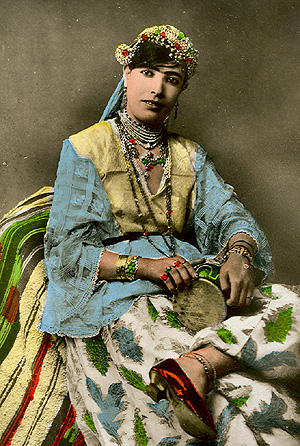 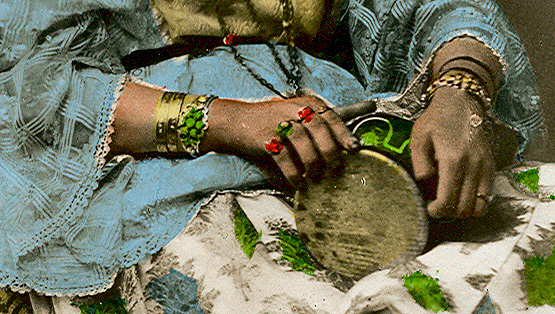 Scenes et types de l'Afrique dy Nord 14600 A - Type de Femme Combier IMP, Macon (S. - et -L) "CIM 1920's - 1930's Author's Collection The above woman with a blue shirt
was probably photographed in the 1920's or 1930's, but later retouched
with color. Her drum head is hennaed, probably with a resist
technique, probably using a cloth with lace similar to that on the
sleeves of her
garment. This henna technique was created with lace, netting, and
gauze cloths: the cloth was tied tightly over the drumhead or skin, and
thick henna paste was pressed down over the cloth, creating a reverse
pattern where the henna touched the surface of the leather or
skin. This resist technique was used across North Africa, Turkey,
and Yemen. Her index fingernail is hennaed.
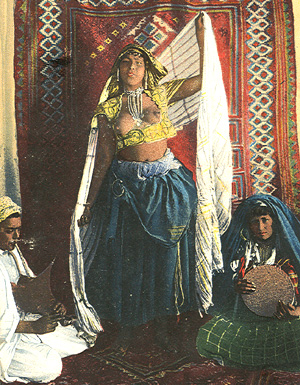 Lehnert and Landrock, Tunisia 1910 - 1920, later retouched with color Author's Collection This image of a dancer and two musicians was reprinted and colored many times for tourist trade in Tunisia, and much of the original photographic detail was lost in reproduction. 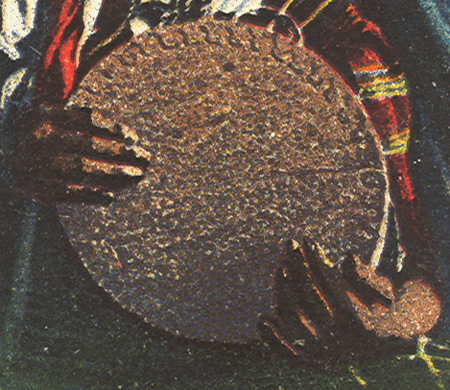 Lehnert and Landrock, Tunisia 1910 - 1920, later retouched with color Author's Collection Some of the original pattern on the drum is still visible in a high resolution scan, and the border pattern remains clear. 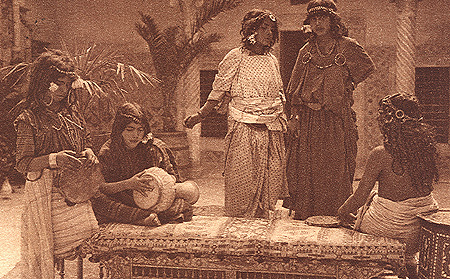 Danseuses arabes 244 Lehnert and Landrock 1910 - 1920 Author's Collection The girls in the above photograph
by Lehnart and Landrock are posed as musicians and dancers. The
doumbek does not have patterns on the drum head, but the riq and frame
drum at left and right are patterned. The photograph reproduction
is not clear enough to determine the pattern on the drum at the left,
but it is possible to make out some of the pattern of the drum by the
girl with her back to the camera.
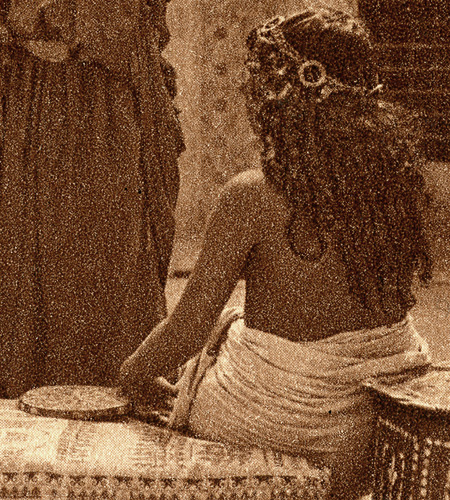 Danseuses arabes 244, detail Lehnert and Landrock 1910 - 1920 Author's Collection Return to the Henna and Leather Index Can't find what you're looking for? Try: The Henna Page Main Index http://www.hennapage.com/henna/mainindex.html *"Henna,
the
Joyous Body Art"
the Encyclopedia of Henna Catherine Cartwright-Jones c 2000 registered with the US Library of Congress TXu 952-968 |